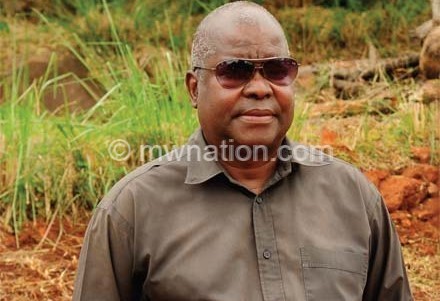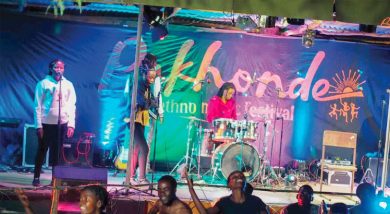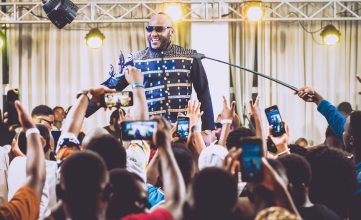Chimombo’s writing
Steve Chimombo’s writings are some of the most difficult to understand, especially his poetry which is embellished with lofty wit, cryptic metaphors and symbolism, literary critics note.
However, for a writer whose works appeared during the time of Malawi’s golden generation of writers such as Jack Mapanje, Frank Chipasula, Lupenga Mphande and Felix Mnthali, he had to create something out of the ordinary to engrave his name in a tapestry of time.

Chimombo was refined by natural disasters and his political time. He acknowledged that there were two natural disasters that nearly claimed his life which shaped his literary direction.
In an interview with Nation Online in 2009, he said that flash floods (napolo) passed a quarter mile from his father’s house when he was a baby. And as a baby, he narrowly escaped the shipwreck of Viphya in 1946. Chimombo and his parents were aboard the ship in its penultimate voyage when it sank.
These disasters left an indelible mark in his mind and the literature he produced, revolved around, mostly, these phenomena. There are the ‘napolo’ poems and a novel titled The wrath of Napolo.
Then the political climate of the time moulded him into a master of wit, metaphors and symbolism.
Benedicto Malunga, a poet, writer and scholar of literature, says that under the autocratic regime of founding president Hastings Kamuzu Banda, writers such as Steve Chimombo and Jack Mapanje perfected the art of using imagery to veil the meaning of their writings from the security apparatus of the State.
“In those days you had Jack Mapanje who titled his anthology Of Chameleons and Gods and a poem Kuyenda kwa Nanzikambe. Chimombo himself used metaphors to conceal meaning of his writings from the regime,” says Malunga.
According to Mnthali, a writer, scholar, literary critic and poet, Chimombo’s writing style mirrored his own. Both employed a unique style in which the use of wit and humour was given prominence.
Commenting on Chimombo’s ‘napolo’ metaphor, Mnthali says: “My favourite line from Napolo is ‘Cataclysmic crack in the cradle of mankind’ which embodies Chimombo’s wit and humour.”
Mnthali says that Chimombo’s early poetry was more humorous than his later works. “I like a poem titled ‘City girls progress’ by Chimombo in which a nicely dressed young lady walks provocatively to work only to be shouted at by her employer, ‘Here is your mop. There’s the bucket. Get to work,” he says.
Chimombo’s witty use of metaphors is depicted in what can be termed as his finest poem, ‘Writers’ Workshop Revisited’. This poem epitomises his literary prowess.
“Stanza one takes the poet back in time to revisit the writers’ workshop where great writers were bred and nurtured,” Msadala analyses it.
“Perturbation sat on my scraping chair/As I stared at contours of commitment/or furrowed faces puzzling over a line/It climbed up to the membrane of my memory/and switched on shots of other backs/and brows captured in similar stances.”
In this stanza, the poet is talking about his own participation in the writers’ workshop as well as that of fellow writers.
His wizardry in metaphors is depicted in the way he assigns each writer a perfect metaphor of some living organism.
“The nightwatcher refers to Frank Chipasula, himself a fine poet who was in attendance. The boy of Ibadan is Professor Felix Mnthali, who was also there. Mnthali once taught at Ibadan University in Nigeria.
“Kalilombe’ is Jack Mapanje. His anthology is titled Of Chameleons and Gods while Kafadala refers to Anthony Nazombe who was the youngest among these giants and Nkhumbutera is Chimombo himself,” analyses Msadala.
The poet’s mind then drifts to the present: “Chamelion eyed, I surfaced to the present/and surveyed the familiar scenes and signs, and wept not for the past chameleons (great writers), but for the ‘ndondocha.’
These ‘ndondochas’ represent a generation of younger writers whose talent dies before blossoming into its potential.
When these writers fail to establish themselves, the poet cries. “I shed Nkhadze tears at Nsendawana,” reads a line.
This line is one of the motifs in Chimombo’s writings. In the Writers’ Workshop Revisited there is a line “I wept Nkhadze tears” which is repeated in a play The Rainmaker. It displays nostalgia for the glorious past.
For example, in The Rainmaker he is crying for the good old days of Maravi Kingdom before Mbona left Nsinja and in the Writers’ Workshop Revisited the poet is crying for the fine generation of writers that left Malawi to settle in the diaspora
While Chimombo’s use of metaphors is highly acclaimed, his humour is another salient feature that sets him apart. In a poem, Formula for Funerals he writes humorously and satirically about the bereaved thus: “The anguish of the bereaved gushes/The sunken flesh of cheeks like gullies...” while in “Modern advertising” he satirises the effect of sensational political messages that people swallow line, sinker and hook. Stanza one reads: “Wake up to the world of Leonex/The song gyrated across the mind/Elbowing out reality/Pirouetted onto the corners of the soul/Bounced against the walls/And curtsied to a crash of cymbals.”
Thus Steve Chimombo’s literary genius ranks him among great poets, playwrights and writers of the metaphysical school of literature and those who espouse literature’s use of imagery. Reading Chimombo is like reading John Donne, contending with the conceit, not literary critics.





